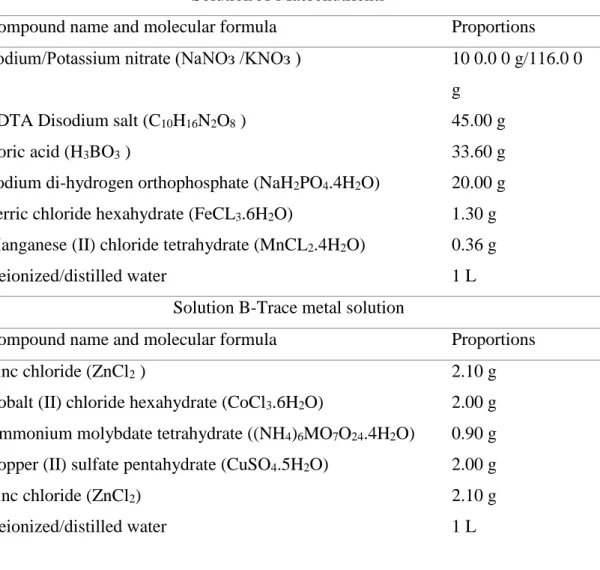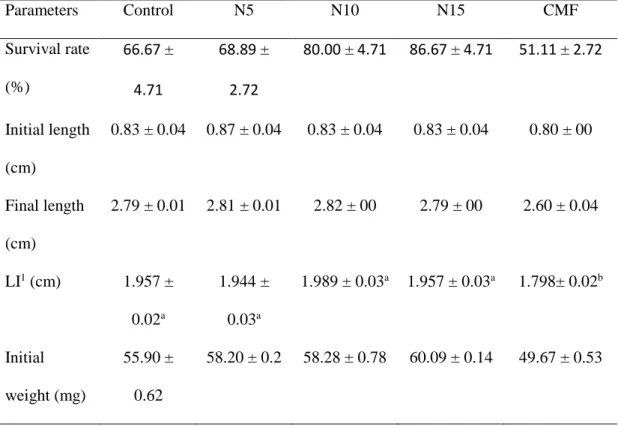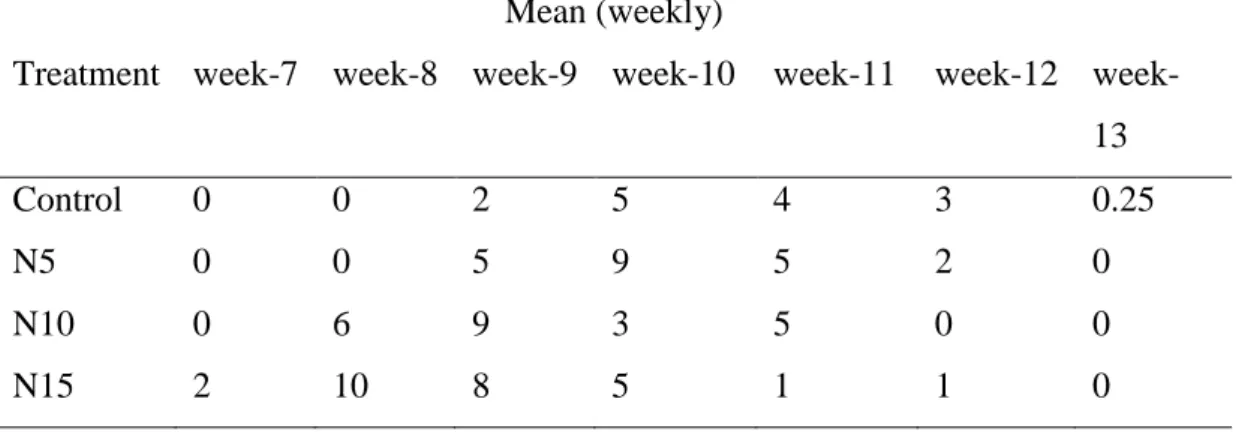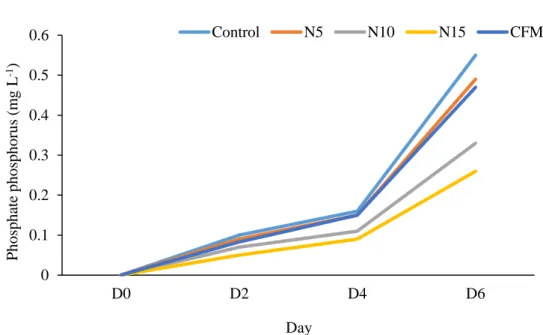The fish feed has been refined, resulting in less waste and therefore ensuring the financial sustainability of the industry (Kruijssen et al., 2020). Microalgae produce more net biomass than any other terrestrial animal or plant (Rizwan et al., 2018). In the context of a biorefinery, microalgae can potentially be used to produce fish feed (Arun et al., 2020; Nagappan and Nakkeeran, 2020).
Unlike plant fibers, microalgal fibers lack lignin and have a low hemicellulose content, which means greater digestibility (Niccolai et al., 2019). Another study showed that administration of Nannochloropsis gaditana to sea bream (Sparus aurata) improved their defense activity (Cerezuela et al., 2012). Changing the light intensity will affect the temperature, which indirectly affects the growth of microalgae (Huang et al., 2013).
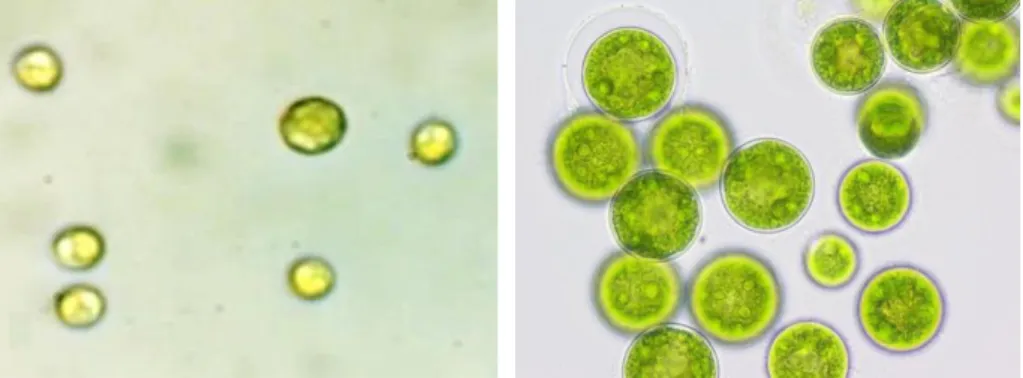
Taxonomic classification
In the fields of ecology, evolution and behavioral sciences, guppies are considered a model organism (Magurran, 2005). Young fish prey on females and are self-sufficient from birth. Both males and females of many domesticated species have larger bodies and are more elaborately ornamented than their wild-type ancestors (Brooks, 2000).
In most cases, algal remains make up the majority of a wild guppy's diet, but diets vary based on the specific requirements of food availability in the ecosystem. Guppy's foraging and feeding behavior is influenced by the size of the group (Schmidt, 2002) and the participation of individuals of the opposite sex (Griffiths, 1996). The food that the fish eats is also affected by the gap size of guppy.

Reproductive biology
Detritus, diatoms, crustaceans, plant debris, aquatic insect larvae, mineral particles, as well as other forms of food are consumed by wild guppies. The most important signals that impact their eating are chemical stimulation through the diet, physical texture and particle size (Noakes and Baylis, 1990). They can withstand levels of salinity up to 150% of that of normal seawater (Corraze, 1993), which has led to their occasional inclusion in marine tropical community tanks, as well as in freshwater tropical tanks.
Well-nourished adults do not often eat their own young, although sometimes safe zones are required for breeding. These also serve to protect the pregnant female from further attention from the males, which is important because the males sometimes attack the females while they are giving birth (Donovan, 2013). It also provides a separate area for the newborn young as protection from being eaten by their mother.
Global trade and economic value of guppy
A number of highly ornamental aquarium strains have been developed around the world, and are extremely popular in the retail aquarium trade, being carried by up to 95% of pet stores.
Chapter-3: Materials and Methods
Culture of algal biomass (Nannochloropsis sp.) 1. Collection and preparation of pure inoculums
- Mass Culture in glass tanks
- Harvesting as dry algal biomass
- Test diet preparation
- Collection and stocking of fish
- Daily monitoring and record keeping
All the formulated test diets were approximately iso-proteins and iso-lipids (Crude protein-41% and lipid-8. After all the ingredients were mixed together, a sufficient amount of water was added to form a dough-like texture. Then the plastic bags was kept in the previously prepared (filtered, aerated and UV treated for 2 days) conditioning tank for three hours.
The chips were then gently released from the bag into the tank water and kept there for three days to acclimate to laboratory conditions. To maintain optimal water quality, each day one-third of the culture water was withdrawn from the bottom of the tank, followed by the addition of new water to compensate for the amount removed. The required amount of lime was used to maintain the pH of the culture tank whenever necessary.

Data collection and analyses
- Assessment of growth parameters
- Protein
- Lipid
- Carbohydrate
- Determination of total carotenoid
- Analysis of oxidative stress biomarker 1. Hydrogen peroxide assay
- Lipid peroxidation assay
- Breeding performance
- Chemical analysis of water quality 1. Total ammonium nitrogen (TAN)
- Nitrite-nitrogen (NO 2 -N)
- Soluble reactive phosphorous (SRP)
- Statistical analysis
Then 1 mL of Reactive 1 was added to 50 mL of Reactive 2 to prepare a final volume of mixed reagent. Then 2.5 ml of the mixed solution was mixed with 0.5 ml of Folin reagent and stored in the dark for 30 minutes. 25 Finally, 1 ml of oxidizing solution was added and allowed to cool at room temperature (20-27℃) for 1 hour.
The oxidation solution was prepared by mixing 100 ml of alkaline reagent (dissolve 100 g of sodium citrate and 5 g of sodium hydroxide in 500 ml of DDH2O) and 25 ml of sodium hypochlorite solution [commercial hypochlorite (e.g. Clorox) which should be about 1.5 N. ]. After more than 2 minutes but less than 10 minutes, 1 ml of NED reagent (0.5 g of N-(1-naphthyl)-ethylenediamine dihydrochloride was dissolved in 500 ml of distilled water) was added and mixed immediately. Ten milliliters of samples and standard solution (10 ml) were placed in test tubes and 1 ml of mixed reagent was added.
Chapter-4: Results
- Growth performance
- Carcass proximate composition
- Total carotenoid and astaxanthin
- Oxidative stress index .1. Lipid peroxidation
- Hydrogen peroxide (H 2 O 2 ) content
- Total fry production
- Physical and chemical parameters of culture water
In addition, there was no significant statistical difference in protein retention between control and treated groups (P > 0.05), except that fish fed commercial feed showed significantly lower protein content (34.62%). The results also show that the carbohydrate value was significantly lower (12.89%) in the control group than in the other groups (P <0.05), while no statistical differences were found between the treated and fed groups. commercial feed (P > 0.05). . At the time of termination, the content of total carotenoid and astaxanthin in the experimental fish showed significant differences (Figure 4.4) between the treatment groups (P < 0.05).
The best coloration was observed in fin and muscle content of fish fed with 15%. Total carotenoid accumulation was found to be significantly lower in the control group than in the treated groups (2.16 μg g-1). Lipid peroxidation was measured by determining malondialdehyde (MDA) as the end product of lipid peroxidation.
In this study, the lipid peroxidation in guppy showed a significant (P < 0.05) difference between treatments. Lipid peroxidation level was marginally higher in the CMF than in all other groups nmol g-1). The results also showed that commercial feed groups had the highest H2O mM g-1 FW) content than the other groups.
32 Figure 4.5.2 Hydrogen peroxide content in guppies fed with formulated food after 100 days of cultivation. The number of fry produced per week showed that females fed the 15% microalgal diet started mating earlier (week 7) and produced a higher number of fry than the other treatment groups. Significantly lower NO2-N (Figure 4.7a), TAN (Figure 4.7b) and PO4-P (Figure 4.7c) were found in water samples from a guppy tank supplemented with Nannochloropsis sp.
Moreover, there was no significant difference in the physical parameters (temperature, DO and pH) of the water for all treatments during the entire experimental period (Table 6).
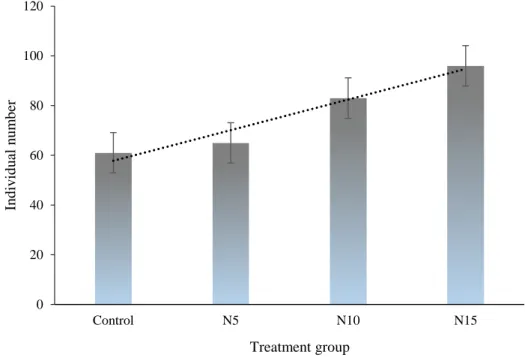
Chapter-5: Discussion
- Growth performance
- Survival and oxidative stress
- Nutritional Composition
- Total carotenoids
This is because increasing the level of microalgae in the feed resulted in an increase in fiber content and a decrease in digestibility and palatability (Sudaryono et al., 1996). Hydrogen peroxide (H2O2) is a reactive oxygen species (ROS) and can pose a risk to the cell (Cemeli et al., 2009). Furthermore, DNA oxidation is usually generated by ROS and is a common form of DNA damage (Azqueta et al., 2009) that needs to be reduced in the animal body.
The findings of this study are consistent with those of Amar et al. 2004), who found that the antioxidant defense of an aquatic organism is influenced by nutritional variables. The need for natural antioxidant enzymes (such as catalase and superoxide dismutase) in scavenging hydrogen peroxide (H2O2) and superoxide radicals is reduced when dietary antioxidant supplementation is high (Lygren et al., 1999). Other microalgae such as Tetracelmis chuii have been proven to be effective in reducing oxidative stress in shrimp muscle (Abdu et al., 2017).
Microalgae also prevented lipid peroxidation in yellow giant mushroom, Pseudosciaena crocea, fed astaxanthin and Haematococcus pluvialis, compared to control diets without microalgae supplementation (Li et al., 2014). Furthermore, antioxidants (b-carotene, astaxanthin and lutein) extracted from the microalgae Spirulina platensis, Haematococcus pluvialis and Botryococcus braunii, respectively, can significantly reduce the levels of lipid peroxidation in mammalian species (male mice from radical and radicals). (Ranga Rao et al., 2010). Haematococcus pluvialis in fish feed has been proven to improve the antioxidant system and some biochemical parameters (Sheikhzadeh et al., 2012).
However, total fatty acid content was reported to be rich in shrimp tail muscle (Ju et al., 2009), which may be consistent with this current finding. According to some researchers, the amount of pigment deposition in the envelope increases with the concentration of carotenoids in the diet (Sommer et al., 1992). Breeding flocks must be fed quality food for several months prior to spawning (Rainuzzo et al., 1997).
The carotenoid content obtained through dietary sources is deposited in the skin tissue of the male and indicates his mating quality with the female (Chatzifotis et al., 2005).
Chapter-6: Conclusions
Recommendations and Future perspectives
Like many alternative feeds, the microalgae-based fish feed has low palatability, but this can be improved by changing the texture of the feed and adding attractants/stimulants that the fish chemosensory systems accept. Evaluation of the effect of a microalgal diet on the growth, survival, composition, reproduction, coloration and other physiological properties of various commercially valuable fish and other aquatic species (crustaceans and molluscs). Influence of a low diet of the microalga Nannochloropsis gaditana (Lubian 1982) on performance, fish morphology and muscle growth in juvenile gilthead bream (Sparus aurata).
Enrichment of gilthead seabream (Sparus aurata L.) diet with microalgae: effects on the immune system Fish Journal of Physiology and Biochemistry. Effect of temperature and of dietary lipid source on female hatchery performance and fatty acid composition of the eggs of rainbow trout. Comparative study of the pigment composition in several strains of Nannochloropsis (Eustigmatophyceae) during its growth in culture.
Effects of the availability of CO2 on growth nutrient uptake and chemical composition of the marine microalgae Chlorella sp. Antioxidant potential of microalgae in relation to their phenolic and carotenoid content Journal of Applied Phycology. Molecular phylogenetics and biogeography of the East Asian-Eastern North American disjunct Mitchella and its close relative Damnacanthus (Rubiaceae Mitchelleae).
Loss and waste in fish value chains: a review of the evidence from low- and middle-income countries. Manual for the production and use of live food for aquaculture Rome: Food and Agriculture Organization of the United Nations. Food and feeding habits of the Guppy Poecilia reticulata from drainage canal systems in Lagos, southwestern Nigeria.
Successful propagation in seawater of Guppy Poecilia reticulata with reference to high salinity tolerance during parturition. Effects of the microalga Scenedesmus almeriensis as a fishmeal alternative in diets for juvenile flounder Sparus aurata. Appendix A: Brief overview of activities related to the feeding trial (100 consecutive days) of guppies fed Nannochloropsis sp.
Brief biography of the student
List of Publications
